“Only an understanding of the differences between Overmolding and Insert Molding can help to decide which injection molding type best suits your application requirements.”
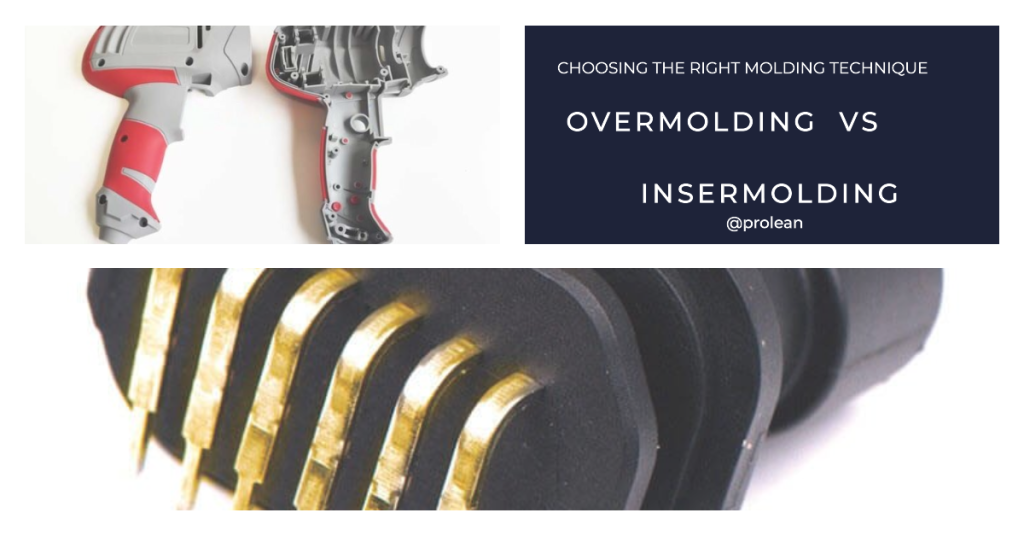
Injection molding has two ways to shape the parts of products made with two or more different materials: Insert Molding and Overmolding. These methods mainly deal with bonding extra parts or materials into primary molding material to form the singular item. However, the distinct mechanism, tooling considerations, and cost implications in Overmolding vs. insert molding make it challenging to choose between them.
In this article, the fundamental differences between insert and overmolding will be elaborated on to help you understand which method is best for your project.
Insert Molding: What is it?
Let’s take an example of an electrical connecter as an insert molded part. The brass/or copper thread is inserted inside the Nylon plastic housing. Do you know how this insert is strongly bonded with plastic with injection molding?
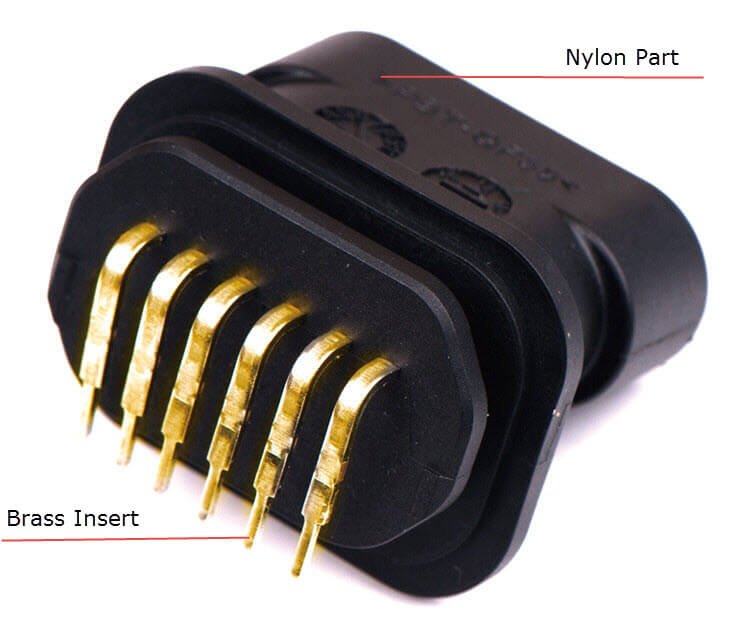
Insert molded part
The insert molding process is similar to standard injection molding, except for adding an extra insert during the molding. When the insert is placed, the molten plastic flows around it and makes tight bonds up to the molecular level on solidification. The compatibility of insert material and plastic is also important to establish a robust bond between them. Meanwhile, its bond formation is also strong if we compare Overmolding vs. insert Molding.
The insert placement can be both manually or automatically. Manual inserting requires expertise and is only feasible for small batches. Meanwhile, the automatic or robotic inserting process precisely places the part inside the mold consistently. Hence, it is suitable for large-scale manufacturing.
Advantages of Insert Molding
- The strong bond between the insert and the surrounding plastic provides excellent strength and durability to the molded part.
- Insert molding can accommodate diverse materials, shapes, and features within a single part.
- The complex parts and features are possible with the insert molding process.
- It reduces the cost by eliminating the different assembly or adhesion needs.
- Replacing the surrounding material with plastic helps to reduce the weight and cost.
Disadvantages of Insert Molding
- Multiple manufacturing facilities are required since the insert must also be separately machined or manufactured.
- The mold design requires consideration of insert position and mechanism for placing it, especially for multiple inserts. Here, this complexity increases the mold manufacturing cost.
- Improper handling or positioning of inserts can cause damage or misalignment.
Try Prolean Now!
Overmolding: What is it?
We can also consider the overmolding process as an insert molding family. It combines two or more materials into a single item by multiple shots of injection molding. For example, polypropylene (PP) and thermoplastic rubber(TPR) mold a power tool handle. PP (structural portion) is used as a substrate, which is molded first, and TPR is molded over it for a non-slip grip.
Subsequently, the substrate needs to be fully(or maximum portion) covered in the overmolding, another vital point in Overmolding vs Insert molding.

Power tool handle made with overmolding
Usually, two separate molds are used in overmolding, one is used to mold the substrate and another to overmold another material over it, also known as the pick and place overmolding technique. However, the 2K shot technique can handle the Plastic Overmolding with only one mold. In this strategy, two materials are injected as individual shots.
Although generally thermoplastics are over-molded over hard plastic elastomers or rubbers, Metal Overmolding is also common in applications like electronic housing & hardware tools manufacturing.
Advantages of Overmolding
- The solid molecular bond by co-polymerization between two materials during overmolding makes a robust product.
- The overmolding is compatible with various substrates, from plastics & elastomers to metal and glass.
- The 2K shot technique to mold rubber and plastics creates mechanical interlocks between them without additional adhesions.
- Overmolding is essential in adding a permanent & flexible rubber grip on the plastic handles of various power tools.
- It is also helpful in adding soft seals to complex components.
Disadvantages of Overmolding
- Typically, it requires two molds for a single part, increasing the upfront tooling cost. Additionally, the precision controls the coordination between the molds.
- The slight deviation in temperature or pressure control can cause the risk of de-bonding or failure. However, it can also happen because of incompatible materials.
- Higher production cycle time due to multiple molds and complex setups, comparing Overmolding vs Insert Molding.
What are the Key Differences in Overolding Vs Insert Molding?
Now, let’s make a head-to-head comparison between inset and overmolding on various aspects to comprehend the Overmolding vs Insert molding in terms of process, production speed, cost, flexibility, etc.
1. Molding Process
Insert molding involves placing pre-made components (like metal or plastic) into a mold before injecting molten plastic to create a single integrated part. On the other hand, overmolding involves molding a second material onto a substrate to create a multi-layered part with distinct properties.
2. Mold comparison
First, what are the differences between insert mold vs overmold? It’s mold complexity. Since the overmolding process involves multiple shot injections instead of pre-positioning or inserting, it requires a separate mechanism for each material injection or even two molds. So, overmold & related tooling is generally more complex than insert molds.
3. Production Time and Speed
The insert molding process takes more time to complete as it includes fully covering of insert and its pre-placing. Meanwhile, the overmolding is relatively faster. Also, production depends on whether it is automatic or manual inserting.
4. Cost Implications
Since the overmolding process involves multi-step molding, it is costlier than insert molding. On the other hand, insert molding can simply combine the pre-made insert with molding material just with the inserting mechanism. Additionally, tooling is also expensive for overmolding.
5. Strength and Durability of Parts
Insert molded tends to exhibit high strength, especially in areas where inserts are integrated and the insert material and molding plastic properties are perfectly compatible. On the other hand, the strength of over-molded parts can vary depending on the bonding between the substrate and overmold layers.
Insert Mold Vs Overmold
Although these molds share similarities in fundamental structure and functionality, they differ in working and design. Thus, understanding insert mold vs. overmold is also important to make the right decision between two injection molding processes.
The insert mold contains the position for the insert part within the cavities. Here, injection gate location is crucial to ensure molten plastic flows around the inserts uniformly and establishes strong bonds with it. Next, ejector pins or related mechanisms should be strategically positioned to facilitate the removal of molded parts without damaging the inserts.
An overmold, runner, and gate design is critical in achieving a uniform flow of molten plastic over the substrate. The uniform flow of the second material prevents air entrapment, flow lines, and weld lines. For more considerations for an overmold design, you can read the Overmolding Design Guide here.
Next, let’s discuss the difference between these two types of injection molds to understand the tooling of Overmolding vs Insert molding.
Table: Insert Mold Vs. Overmold
| Criteria | Insert Mold | Overmold |
| Mold Design Focus | Insert positioning and undercut management | Substrate accommodation and material compatibility |
| Main Challenges | Insert alignment, venting, and part ejection | Substrate adhesion, cooling channels, and flow control of injected plastic |
| Applications | Complex and multi-material parts | For aesthetic and soft-touch or grip surfaces |
| Cost Consideration | The automatic inserting system might add the initial cost but economical per-part cost in the long run. | Two molds or a 2K shot mold both are complex and cost more. |
Try Prolean Now!
Which one Should I Choose? Overmolding or Insert Molding
Selection entirely depends on the application and functional requirements. This means it is hard to recommend one method over another, and there is a specific need to decide which one to choose.

Insert molding application
Here are the conditions to choose between Overmolding vs. insert Molding, with examples of each scenario;
When to Choose Insert Molding?
- First, if you have a pre-made substrate to fit or enclose with plastic, use it. For example, we had tool grips for screwdrivers, pliers, and wrenches.
- If the part or product contains electrical wires or threads for connections like connectors, terminals, etc.
- If the product or item has assembly arrangements that might also require opening occasionally for repairs like router enclosure or control panels.
- For the strong mechanical interlocking joints, such as the automotive gear shift shaft on the plastic body.
When to Choose Overmolding?
- Overmolding is ideal for applications requiring flexible or soft grips, like elastomer grips on power tool handles. It can provide insulation for electrical shocks and dampen vibration.
- If you don’t have the pre-made substrate, both layers must mold.
- This is for cushioning and shock absorption of household items like handles of pots, pans, and utensils.
- If there is no requirement or chance of future disassembly. For instance, circuit breaker housings.
We can Overmold and integrate the Inserts into Plastic Molding
Whether you need overmolding or insert molding, we can solve your requirements. ProleanTech has advanced injection molding facilities that can accommodate inserts and overmolding service over various substrates. Our CNC machining service and EDM factory can also manufacture the molds for projects.
We have experience collaborating with automotive, electronics, consumer items, medical, and other industries for diverse injection molding parts & products. So, reach out to us if you need any related services.
Try Prolean Now!
Conclusion
Although both processes combine separate materials into a single functional part, there are differences in tooling, cost, structural strength, and other aspects. Similarly, both methods are ideal for different application requirements. Insert Molding is suitable if the metal or hard plastic needs to be fully encapsulated, whereas overmolding is used to mold multi-layer parts of elastomers or rubbers with plastics.
Therefore, considering your design specifications & application requirements is crucial to deciding between Overmolidng Vs Insert Molding.
FAQs
What is the main difference in Overmolding vs. Insert Molding?
The main difference is the inclusion mechanism of additional material: overmolding adds a material layer over an existing substrate, whereas insert molding involves molding a component around the pre-inserted component.
Which one is best insert molding or overmolding?
There is no straight recommendation. Insert molding is best for parts requiring added strength or functionality. On the other hand, overmolding is ideal for enhancing comfort or aesthetics.
Are insert molding parts durable?
Yes! They can last several years, considering the suitable material composition and design.
How can I reduce the overmolding cost?
The key strategies to reduce the overmolding cost include design optimization to make it simple, streamlining production processes, and automation integration.

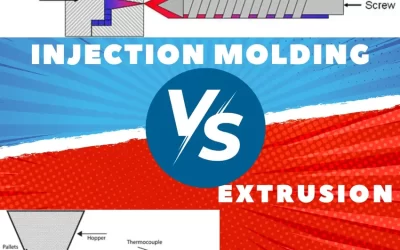
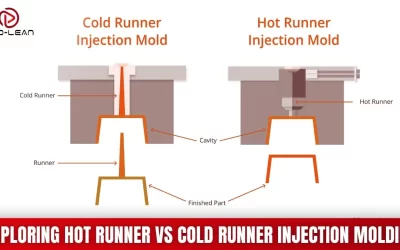
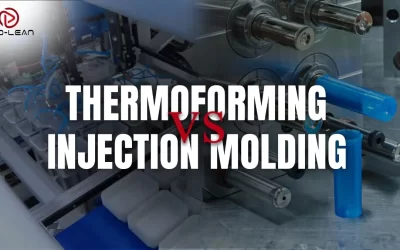
Great article! I have a project that requires adding a soft grip to a metal tool. Can you handle such overmolding projects, and what materials can you use for the soft grip?
Thank you for your question! Yes, we can handle overmolding projects that require adding soft grips to metal tools. We commonly use thermoplastic rubber (TPR) and silicone for soft grips, ensuring durability and comfort.